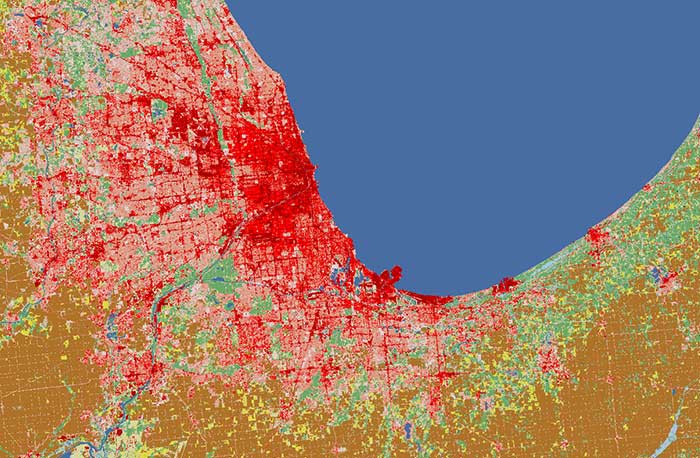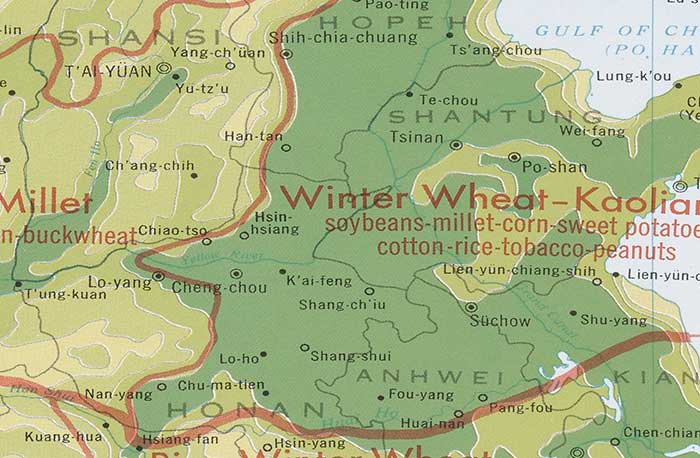View Metadata
United States Faults, 1974
- Identification Information
- Spatial Data Organization Information
- Spatial Reference Information
- Entity and Attribute Information
- Distribution Information
- Metadata Reference Information
- Identification Information
- Citation
- Originator
- ArcAtlas: Our Earth (ESRI)
- Originator
- United States Geological Survey
- Publication Date
- Unknown
- Title
- United States Faults, 1974
- Geospatial Data Presentation Form
- vector digital data
- Online Linkage
- https://www1.columbia.edu/sec/acis/eds/dgate/studies/C1301/data/landinfo_us_faults_1974.zip
- Abstract
- United States faults is a line theme representing disjunctive dislocations, or breaks in the continuity of a geological formation throughout the United States.
- Purpose
- For educational, non-commercial purposes only.
- Supplemental Information
- A fault, also known as a disjunctive dislocation, is a break in the continuity of a geological formation. Faults can be formed when the earth's crust is compressed or stretched. They vary greatly in size, both in length and depth. Faults are classified according to the type and direction of movement of the rocks on either side of the fault. For example, a fault along which no appreciable movement has occurred is called a joint. Faults with appreciable movement include vertical faults, thrust faults, transcurrent faults, and displacements. A thrust fault usually has a gently sloping shift (45 to 60 degrees). A very gently sloping thrust with overlap of tens or hundreds of kilometers is called a tectonic or overthrust sheet. Faults caused by stretching of the earth's crust frequently result in the subsidence of one block and the uplift of another block along the plane of fracture. These are called vertical or inclined faults. Large linear tectonic structures formed by horizontal stretching are called rifts. They usually form in association with vast, arched uplifting. Rifts can be thousands of kilometers long and hundreds of kilometers wide. A very large rift is called a rift belt or zone, such as the east African rift zone or the Baykal rift zone. Some faults incise the earth's crust and reach the earth's upper mantle. These are called deep faults and are typically hundreds or thousands of kilometers long, as much as 700 kilometers deep, and from several hundred meters to tens of kilometers wide. Deep faults are ancient. They bound large blocks of the earth's crust and have different structures and developments. Two types of faults are shown on the maps. They are (1) faults created by the dislocation of rocks that define the geological structures of the continents and (2) faults created by the morphology of the present-day relief and morphostructure. The first ones include tectonic contacts and thrust-faults; they are displayed and interpreted with the Structural Geology. The second ones include steps and rifts: they are displayed and interpreted with Morphostructure maps. As a rule, the first type of faults are ancient structures, while those revealed by relief are comparatively young structures that appeared during the neotectonic stage of the earth's evolution (mostly in the Neogene and Quaternary periods). Faults -- Worldwide distribution pattern The highest density of faults revealed by relief is found in the zones where the lithospheric plates meet. The zones are called suture zones and are zones of active mountain folding. Rift faults are found in divergence zones. On the continents, these zones include the east African rift zone where the African plate is separating from the Somali plate, the Baykal rift zone that divides the Eurasian plate and the Amur plate, and the Mom rift zone that divides the Eurasian plate and the North American plate. A high density of deep faults revealed by present-day relief is found in the collision zone between the Eurasian plate and the African and Indo-Australian plates. Most faults are deep and seismic. They are related to the complex mountain relief of the African-Eurasian belt extending from Gibraltar to southeast Asia, sometimes called the Thetys Belt. The density of faults within the continental plates is much higher on shields and lower in areas with platformian mantles. Faults -- Data sets, feature classes, and fields Data source names: AFFALSDD - Africa ASFALSDD - Asia AUFALSDD - Australia EUFALSDD - Europe NAFALSDD - North America SAFALSDD - South America Data source type: ARC/INFO line coverages Feature class: Line -- Faults 1 descriptive field. Type -- The type of the fault. Contains one of the following phrases: tectonic contact thrust-fault step rift Faults -- Method The fault maps in this atlas show the relatively large faults that reveal the geological structure of the continents, mainly fold or block structures. The location of faults corresponds to the strike of shifted rocks. Information on two types of tectonic dislocations is also given. The two types are (1) tectonic contacts with dominant vertical dislocations of rocks (mainly faults, upthrust faults, etc.) and (2) tectonic contacts with dominant horizontal dislocations of rocks (thrusts). The morphostructure maps show the largest faults differently revealed by present-day relief. They are borders of mountains and platformian plains, ranges and depressions, various pronounced parts of river valleys, chains of lake depressions, and so on. The attributes on the faults were acquired from the survey maps and regional geological and geomorphological maps that were used to compile the geological and geomorphological maps. The maps were of various scales.
- Temporal Extent
- Currentness Reference
- ground condition
- Time Instant
- 1974
- Bounding Box
- West
- -124.693108
- East
- -67.025742
- North
- 49.031315
- South
- 27.227633
- Theme Keyword
- geoscientificinformation
- Theme Keyword Thesaurus
- ISO 19115 Topic Categories.
- Theme Keyword
- Faults
- Theme Keyword Thesaurus
- None
- Place Keyword
- United States
- Place Keyword Thesaurus
- Library of Congress Subject Headings
- Temporal Keyword
- Access Restrictions
- For current Columbia affiliates only.
- Use Restrictions
- For educational, non-commercial use only.
- Status
- Complete
- Maintenance and Update Frequency
- Unknown
- Point of Contact
- Contact Organization
- LAND INFO Worldwide Mapping, LLC
- Delivery Point
- PO Box 261961
- City
- Highlands Ranch
- State
- CO
- Postal Code
- 80163-1951
- Country
- USA
- Contact Telephone
- 303-790-9730
- Contact Electronic Mail Address
- sales@landinfo.com
- Native Data Set Environment
- Microsoft Windows XP Version 5.1 (Build 2600) Service Pack 3; ESRI ArcCatalog 9.2.6.1500
- Spatial Data Organization Information
- Direct Spatial Reference Method
- Vector
- Point and Vector Object Information
- SDTS Terms Description
- SDTS Point and Vector Object Type
- String
- Point and Vector Object Count
- 16075
- Spatial Reference Information
- Horizontal Coordinate System Definition
- Geographic
- Latitude Resolution
- 0.000000
- Longitude Resolution
- 0.000000
- Geographic Coordinate Units
- Decimal degrees
- Geodetic Model
- Horizontal Datum Name
- North American Datum of 1927
- Ellipsoid Name
- Clarke 1866
- Semi-major Axis
- 6378206.400000
- Denominator of Flattening Ratio
- 294.978698
- Entity and Attribute Information
- Entity Type
- Entity Type Label
- us_faults
- Entity Type Definition
- Faults
- Attributes
- FID
- Internal feature number. (Sequential unique whole numbers that are automatically generated.)
- Definition Source
- ESRI
- Shape
- Feature geometry. (Coordinates defining the features.)
- Definition Source
- ESRI
- LENGTH
- Length
- KBF_
- KBF_ID
- DESC
- LTYPE
- LONG_DESC
- ALC
- DESCLTYPE
- Distribution Information
- Distributor
- LAND INFO Worldwide Mapping, LLC
- Name
- Metadata Reference Information
- Metadata Date
- 20080924
- Metadata Contact
- Contact Information
- Contact Organization Primary
- Contact Organization
- Research Data Services (RDS), Columbia University Libraries
- Contact Person
- GIS/Metadata Librarian
- Contact Address
- Address
- 420 W. 118th St., 215 IAB, MC 3301
- City
- New York
- State or Province
- NY
- Postal Code
- 10027
- Contact Voice Telephone
- (212)854-6012
- Contact Electronic Mail Address
- data@library.columbia.edu
- Metadata Standard Name
- FGDC Content Standards for Digital Geospatial Metadata
- Metadata Standard Version
- FGDC-STD-001-1998


